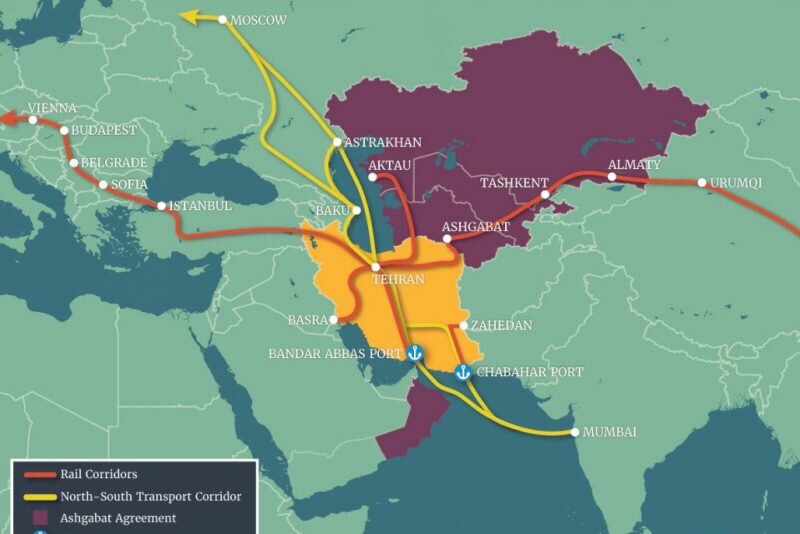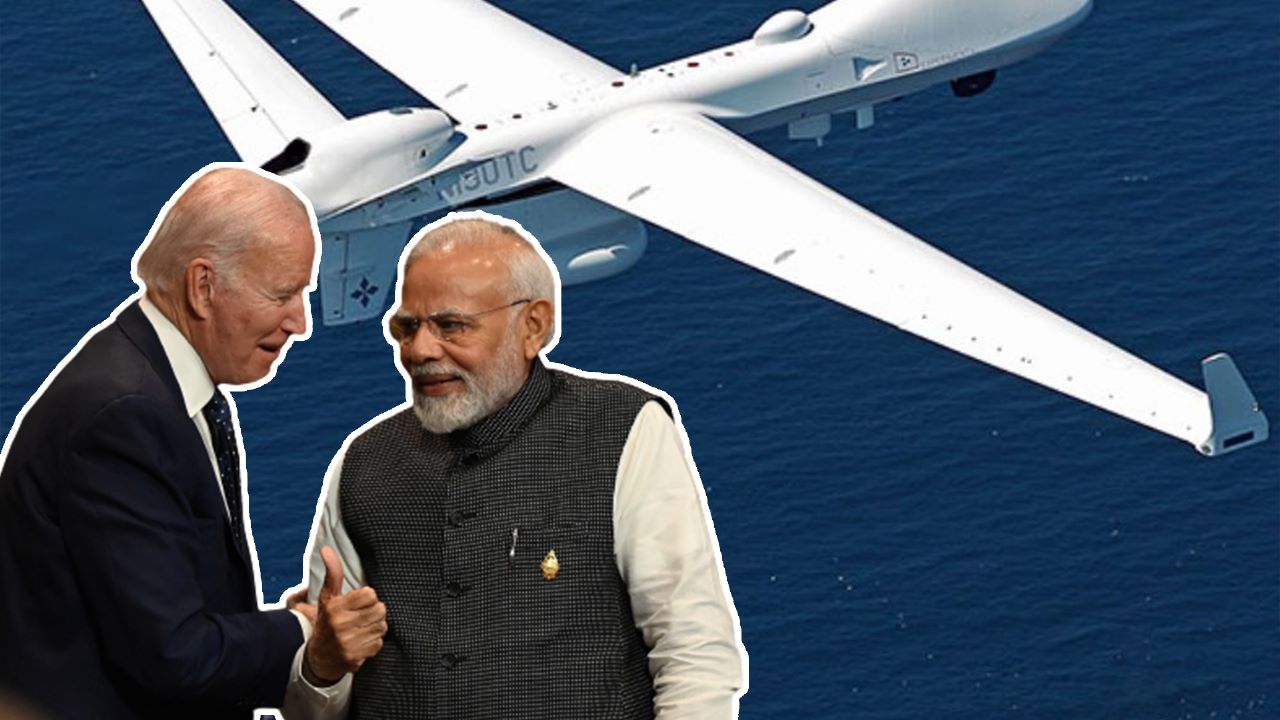OPED By Karan Sharma
The recent signing of a 10-year pact to manage the Chabahar Port in Iran marked a significant milestone in India’s regional connectivity ambitions. Situated on Iran’s south-eastern coast of Makran, the Chabahar port holds immense strategic importance for India, serving as a vital conduit for trade with Iran, Central Asia, and Russia.
Moreover, the port plays a pivotal role in operationalizing the International North-South Transport Corridor (INSTC), a key initiative aimed at bolstering trade links between the ports on India’s Western coast with Iran and Russia.
However, India’s efforts to develop Chabahar Port have not gone unnoticed by the United States, which has long maintained stringent sanctions against Iran. Just hours after the Chabahar deal was inked, the US issued a stern warning, emphasizing the “potential risk of sanctions” for anyone engaging in business dealings with Tehran.
This thinly veiled threat underscores Washington’s determination to enforce its unilateral sanctions regime, regardless of the collateral damage it may inflict on its strategic partnerships and regional stability in Asia.
Yet, for India, the stakes are too high to capitulate to American pressure. The Chabahar port project represents not just an economic opportunity but a strategic imperative for diversifying trade routes and reducing dependence on volatile transit corridors controlled by unfriendly neighbors. By bypassing the ports of Karachi and Gwadar in Pakistan, India can unlock new avenues for trade with Central Asia and Russia, bolstering its economic resilience and geopolitical leverage.
The signing of the 10-year pact, valued at $370 million, underscores the port’s growing importance as a vital trade artery connecting India with the countries of the Eurasian Economic Union.
With IPGL pledging an investment of $120 million and the Government of India extending an additional credit window of $250 million for Iran, the stage is set for major infrastructural enhancements and capacity building at the port.
Since assuming operations at the end of 2018, IPGL has made remarkable strides in transforming Chabahar Port into a bustling hub of economic activity; the port has handled container traffic exceeding 90,000 TEUs and bulk and general cargo totaling over 8.4 million tonnes. More importantly, Chabahar Port has played a pivotal role in facilitating the shipment of essential commodities, including 2.5 million tonnes of wheat and 2,000 tonnes of pulses, from India to Afghanistan.
India’s persistent advocacy for including Chabahar Port in the framework of the International North-South Transport Corridor (INSTC) underscores its strategic importance as a linchpin in regional connectivity initiatives.
While Bandar Abbas has traditionally served as Iran’s busiest port, India’s push for Chabahar’s integration into the INSTC framework reflects its recognition of the port’s unparalleled advantages.
National Security Advisor Ajit Doval’s assertion of India’s desire to integrate Chabahar into the INSTC framework, voiced during an NSA-level meeting of the Shanghai Cooperation Organisation (SCO), reaffirms India’s strategic vision for the region. Moreover, Chabahar’s strategic location closer to India’s west coast and its natural deep-sea port capability, which allows accommodation of full-size container ships, distinguish it from its counterpart.
India’s substantial investments, totaling about $500 million since 2016, underscore its unwavering commitment to developing Chabahar Port, particularly the Shahid Beheshti terminal. Hence, By positioning Chabahar as a gateway to the INSTC, India aims to harness its potential to facilitate the corridor’s development.
The International North-South Corridor
Initially proposed in 2002, the INSTC envisioned a sprawling network of sea, rail, and road routes spanning 7,200 kilometers, aimed at facilitating trade between India and Russia while circumventing Pakistan. Despite its ambitious scope, implementation faltered due to logistical challenges such as poor rail connectivity within Iran and cumbersome customs procedures at various borders, leading to waning interest among participating countries.

However, recent developments have breathed new life into the INSTC, fueled by a confluence of factors. The burgeoning trade between India and Russia following the Ukraine crisis, coupled with India’s economic growth and emergence as the fourth-largest economy globally, has rendered its market increasingly lucrative for Russia and other energy-rich Central Asian nations, underscoring the economic rationale for reviving the INSTC.
The Indian government has recently tried to diversify trade routes after the COVID-19 pandemic through initiatives like the India-Middle East-Europe Economic Corridor (IMEC) at the G20. However, the resurgence of conflict in the Middle East, particularly the Hamas-Israel conflict, has cast a shadow over IMEC’s prospects, amplifying the significance of the INSTC as a reliable conduit for trade and commerce currently.
INSTC has undergone two dry runs in 2014 and 2017, validating its feasibility and potential benefits. These trials, conducted on routes to Azerbaijan via Iran and to Russia’s Astrakhan via the Caspian Sea, demonstrated the corridor’s viability as a cost-effective and efficient alternative to traditional sea routes.
Studies conducted by experts, including Shankar Shinde, former chairman of the Freight Forwarders Associations in India (FFFAI), have affirmed the INSTC’s superiority over the Suez Canal route in terms of cost and time efficiency. This validation reinforces the corridor’s potential to revolutionize trade dynamics and unlock new avenues for commerce between participating nations.
Despite challenges posed by American sanctions against Iran, the INSTC has remained operational since 2018-19, facilitating smaller shipments even amidst geopolitical headwinds.
In July 2022, the first major commercial consignment, comprising wood laminates, was transported from Russia to India via the corridor. Following this, at the Caspian Sea Summit in Ashgabat, Turkmenistan, Russian President Vladimir Putin lauded the INSTC as a “transport artery” connecting St Petersburg to ports in Iran and India. This endorsement highlights the corridor’s strategic importance for Moscow.
Furthermore, India’s trade landscape has dramatically transformed in recent years; rapid imports of cheap Russian oil have fueled exponential growth in bilateral trade, with figures soaring from $4.86 billion in April-January FY 21-22 to $65 billion in 2023-24. The cheap Russian energy, however, loses its lucrativeness due to the transportation costs incurred on the long meandering sea routes from the Pacific and the Northern Sea (which often becomes inaccessible for freight during the winter season).
The desire to mitigate the transportation inaccessibility produced by the Arctic freeze and the long and vulnerable sea routes between Russian energy export points and India has further made the INSTC increasingly important for Russia. Interestingly, while Indian companies initially exercised caution due to US sanctions against Iran, sanctions against Russia have paradoxically led to a boost in trade between India and Moscow and given a second life to Chahbahar and INSTC.
However, the specter of American sanctions posing a significant challenge to the corridor’s progress cannot be entirely dismissed. To minimize the risk of disruption posed by sanctions, the Indian government must devise effective strategies to safeguard its companies operating in Chabahar and the INSTC.
Ensuring the success of the INSTC requires concerted efforts to protect the corridor from external pressures. India’s proactive engagement with stakeholders, coupled with diplomatic initiatives to garner support for the corridor, developing banking infrastructure capable of bypassing American sanctions through local currency exchange, and deploying an indigenous transaction system will be crucial in overcoming obstacles and advancing the project’s objectives.
The corridor offers a vast scope for trade with the states of the Eurasian Economic Union (EEU), boasting a collective GDP of 2.4 trillion dollars and abundant reserves of essential resources such as iron, coal, uranium, gas, and oil, which are crucial for India’s growing economy. Moreover, including Iran in the INSTC through the Chahbahar raises India’s accessibility and will help strategically balance Chinese entry into the Arabian Sea through the Gwadar port.
Balancing Chinese Presence
By facilitating closer cooperation with Iran, the INSTC not only strengthens India’s energy security but also serves as a bulwark against Chinese dominance in the region. Moreover, the prospect of Chinese entry into Chabahar Port poses a strategic challenge, potentially undermining India’s interests and consolidating Chinese influence in the region.
It should be noted that both the Chahbahar port and Gwadar initially were part of the original plan of the China-Pakistan Economic Corridor (CPEC).
Hence, by bolstering cooperation with Iran through integrating Chabahar into INSTC, India can effectively counter Chinese dominance on the Makran coast and gradually prevent Iran from falling into total dependence on China, akin to the trajectory Russia took since the onset of the conflict in Ukraine.

The United States should support India’s engagement with Chabahar Port and the INSTC, as it aligns with the broader objectives of countering Chinese hegemony in Central Asia and Iran.
Rather than viewing India’s investments in Chabahar as anti-American, the United States should recognize them as driven by India’s national interest and strategic imperatives. By ensuring India’s energy security and, if not challenging but at least gradually diluting Chinese hegemony in Central Asia, India’s strategic recalibration in the region would ultimately benefit US interests in the long term.
In conclusion, the INSTC through the Chahbahar represents a strategic imperative for India, offering a pathway to economic prosperity, regional stability, and diversification of energy supply lines.
By leveraging the corridor’s vast potential and fostering closer cooperation with Iran, India can safeguard its own interests and contribute to broader efforts to counter Chinese influence in the region.
As India navigates the complexities of geopolitics, its engagement with the INSTC emerges as a cornerstone of its strategic vision for the Eurasian region, promising mutual benefits for all stakeholders involved.
- Karan Sharma is a Senior Research Fellow at the Department of Humanities and Social Sciences at BITS-Pilani Goa.
- Views personal of the author




